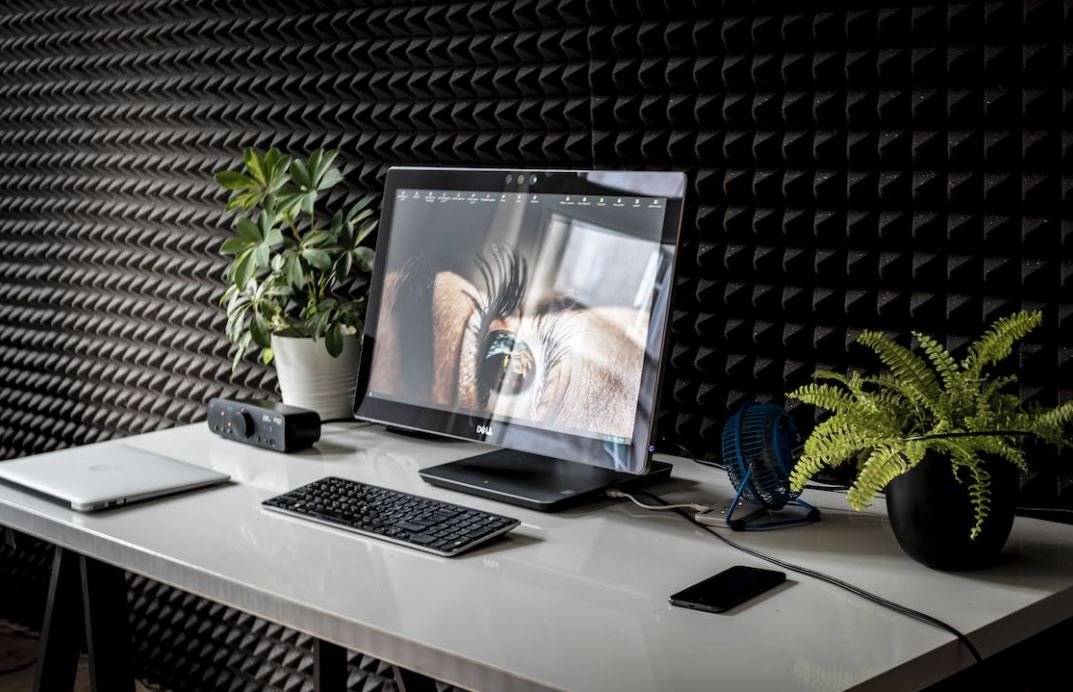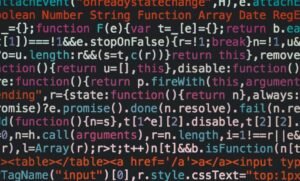Make App with Flutter
Flutter is a popular open-source framework developed by Google that allows developers to create high-quality mobile and web applications using a single codebase. With its fast development cycle and powerful performance, Flutter has gained popularity among developers for building beautiful and seamless user interfaces. In this article, we will explore the key features of Flutter and how you can use it to develop your own app.
Key Takeaways:
- Flutter is an open-source framework for building mobile and web applications.
- It uses a single codebase to create applications for iOS, Android, and the web.
- Flutter provides hot reload, which allows for rapid development and experimentation.
- Its widget-based architecture allows for simple and flexible UI layouts.
- Flutter apps can have native performance and look on multiple platforms.
One of the main advantages of Flutter is its single codebase approach. Instead of writing separate code for iOS and Android, you can write code once and use it across multiple platforms. This not only saves development time but also ensures consistency throughout your app. With Flutter, you can create stunning UIs using a wide range of customizable widgets.
Flutter’s hot reload feature is a game-changer for developers. It allows you to see the changes you make to your code immediately, without having to restart the app. This makes the development process faster and more efficient, as you can quickly experiment with different UI layouts or test new features.
When it comes to UI design, Flutter provides a wide range of customizable widgets that allow you to create beautiful and responsive user interfaces. Whether you need buttons, text fields, or complex layouts, Flutter has got you covered. You can easily customize the appearance and behavior of these widgets to match your app’s branding and user experience requirements.
Building Your First Flutter App
Now that you have an understanding of Flutter’s key features, let’s dive into the process of building your first Flutter app. Follow these steps to get started:
- Set up your development environment by installing Flutter and the necessary tools.
- Create a new Flutter project using the
flutter createcommand. - Open the project in your favorite code editor.
- Write code in Flutter’s Dart programming language to create your app’s UI.
- Use Flutter’s hot reload feature to instantly see the changes in your app.
- Add functionality to your app by writing Dart code to handle user interactions and data.
- Test your app on different devices and platforms to ensure compatibility.
- Build and release your app for deployment on app stores or web servers.
Comparison: Flutter vs. Native Development
When deciding whether to use Flutter or native development for your app, it’s essential to consider the pros and cons of each approach. Take a look at the following table for a quick comparison:
| Criteria | Flutter | Native Development |
|---|---|---|
| Development Time | Shorter development time due to code reuse. | Development time may be longer as separate codebases are required. |
| Performance | Flutter apps can achieve native-like performance. | Native apps have optimal performance on their respective platforms. |
| User Interface | Flutter provides a set of customizable widgets for UI design. | Native development allows for full access to platform-specific UI components. |
Conclusion
In conclusion, Flutter is an excellent choice for developing mobile and web applications with its single codebase, hot reload feature, and flexible UI design. Whether you are a beginner or an experienced developer, Flutter provides a smooth and efficient development experience. So why wait? Start building your own Flutter app today and experience the power of this innovative framework.

Common Misconceptions
Misconception 1: Flutter is only for mobile app development
One common misconception about Flutter is that it can only be used for developing mobile applications. However, Flutter is actually a versatile framework that can be used to build applications for various platforms, including web and desktop. Many successful web and desktop applications have been built using Flutter.
- Flutter can be used to create web applications using the Flutter for Web framework.
- Flutter can be used to build desktop applications for Windows, macOS, and Linux.
- With Flutter, developers can create applications that can run seamlessly across multiple platforms.
Misconception 2: Flutter apps are slow and not native-like
Another misconception is that Flutter apps are slow and do not provide a native-like experience. In reality, Flutter uses a high-performance rendering engine called Skia, which allows it to achieve excellent performance on both iOS and Android devices. Flutter also provides a set of customizable material design and Cupertino widgets that give the apps a native look and feel.
- Flutter leverages hardware acceleration and offers smooth animations and transitions.
- The hot reload feature in Flutter allows developers to see changes instantly, which helps speed up development and testing.
- Several popular applications, such as Google Ads and Alibaba, have been built using Flutter, demonstrating its ability to deliver native-like performance.
Misconception 3: Flutter is not suitable for large-scale applications
Some people believe that Flutter is not capable of handling large-scale applications. However, Flutter offers a robust set of tools and features that can support the development of complex and scalable apps. The framework provides excellent state management options, such as Provider and Riverpod, which make it easier to manage the state of large applications.
- Flutter offers a widget-based architecture, which helps in structuring and managing large codebases effectively.
- Flutter allows developers to easily work with databases and APIs, ensuring seamless integration with backend systems.
- Several well-known companies, including BMW, Tencent, and Reflectly, have built large-scale applications using Flutter.
Misconception 4: Flutter is only for beginners or non-professional developers
There is a misconception that Flutter is primarily targeted towards beginners or non-professional developers. However, Flutter is a powerful framework that can be used by both beginners and experienced professionals alike. Its simplicity and easy-to-understand syntax make it an excellent choice for those starting in app development, but it also offers advanced features and capabilities that can satisfy the needs of experienced developers.
- Flutter has a large community of experienced developers providing support and contributing to its growth.
- The Flutter framework is backed by Google, ensuring its continuous improvement and support.
- Flutter provides advanced features like platform-specific APIs, unit testing, and integration testing, making it suitable for professional developers.
Misconception 5: Flutter is less popular than other frameworks
Although some people underestimate Flutter’s popularity, it has gained significant traction in the app development community. Flutter is highly regarded for its ability to streamline the development process, improve performance, and offer an attractive user interface. With its growing ecosystem and the support of major tech companies like Google, Flutter is becoming an increasingly popular choice for developing cross-platform applications.
- Flutter has a considerable and active community of developers worldwide.
- Many well-known companies, including Huawei, Philips, and Groupon, have adopted Flutter for their app development needs.
- Flutter has seen substantial growth in the number of contributors and packages available in its ecosystem.

Widgets Provided by Flutter
Flutter is a cross-platform framework that provides various widgets for building beautiful and interactive user interfaces. Here’s a glimpse of some popular widgets offered by Flutter:
Widgets for Building Layouts
Flutter offers a range of widgets specifically designed for building user interfaces and arranging elements in a visually appealing manner. These widgets include:
Widgets for Text and Fonts
Flutter provides an extensive collection of widgets for displaying and formatting text, making it effortless to customize the appearance of your app’s textual content. Some of these widgets are:
Widgets for Buttons and Input
Buttons and input fields are vital components of an app’s user interface. Flutter equips developers with widgets for creating interactive buttons and receiving user input. Take a look at some of these widgets:
Widgets for Images and Icons
Images and icons are often used within apps to enhance visual appeal and facilitate comprehension. Flutter offers widgets that simplify the process of adding images and icons to your app. Consider these widgets:
Widgets for Navigation
Navigation is essential for creating seamless user experiences within an app. Flutter provides widgets to aid in navigating between screens and organizing app navigation. Explore some of these navigation widgets:
Widgets for Animations
Animations play a crucial role in making an app feel more dynamic and engaging. Flutter incorporates widgets to simplify the implementation of animations. Let’s check out a few of these widgets:
Widgets for Gestures
Gestures allow users to interact with an app in a natural and intuitive way. Flutter offers widgets that enable developers to capture and respond to various user gestures. Here are some widgets for handling gestures:
Widgets for Networking and HTTP Requests
Many mobile apps rely on retrieving data from the internet. Flutter provides widgets that assist in making HTTP requests and handling network-related operations. These widgets can simplify the process of connecting your app with online resources. Here’s a glimpse of some networking widgets:
Widgets for Forms and Input Validation
Forms are commonly used to collect user input and validate it before processing. Flutter offers widgets that streamline the creation of forms and simplify input validation. Let’s explore a few of these widgets:
Widgets for Platform-Specific Features
Flutter allows developers to leverage platform-specific features seamlessly. By utilizing platform-specific widgets, you can ensure that your app feels native on each target platform. Take a look at some platform-specific widgets provided by Flutter:
By harnessing the power of these widgets, Flutter empowers developers to create stunning and feature-rich mobile applications across multiple platforms, accelerating the app development process while maintaining the highest quality standards and user experiences.
Frequently Asked Questions
What is Flutter?
Flutter is an open-source UI software development kit (SDK) created by Google. It allows developers to build native-looking apps for iOS, Android, web, and desktop from a single codebase.
What programming language is Flutter written in?
Flutter is implemented in the Dart programming language, which was also developed by Google. Dart is a modern, object-oriented language with a garbage collector and a strong type system.
Do I need to know Dart to use Flutter?
While having some knowledge of Dart is beneficial, you can start using Flutter even if you have no prior experience with Dart or any other programming language. Flutter’s extensive documentation and community support make it easier for beginners to get started.
Can I use Flutter to build iOS apps?
Absolutely! Flutter allows you to build high-performance, visually appealing, and native-looking iOS apps. It uses Apple’s Metal API instead of the default UI framework, guaranteeing a smooth and seamless experience.
Can Flutter be used for web development?
Yes, Flutter enables developers to create web applications using the same codebase they use for mobile apps. By compiling the Flutter code to JavaScript during the build process, it can run in modern web browsers without any compromise in performance or functionality.
Is Flutter suitable for building complex apps?
Absolutely! Flutter’s declarative UI approach, hot reload feature, and extensive set of pre-built widgets make it an excellent choice for building complex and feature-rich applications. Many successful apps, including those with millions of users, have been built using Flutter.
Can I use Flutter to create desktop apps?
Yes, Flutter has experimental support for building desktop applications on Windows, macOS, and Linux. However, it is currently in a technical preview stage, so some features may be limited or unstable.
What kind of apps can I build with Flutter?
Flutter can be used to create a wide range of apps, including but not limited to: social media apps, e-commerce apps, productivity apps, financial apps, games, educational apps, and much more. Its flexibility and performance make it suitable for various application domains.
Does Flutter have good community support?
Yes, Flutter has a thriving community of developers and enthusiasts. There are numerous online resources, forums, tutorials, and sample projects available to assist developers at every stage of their Flutter journey. The community is known for its active engagement and prompt assistance.
Is Flutter free to use?
Yes, Flutter is completely free and open source. There are no licensing fees or subscriptions required to use Flutter or to distribute your Flutter apps.





